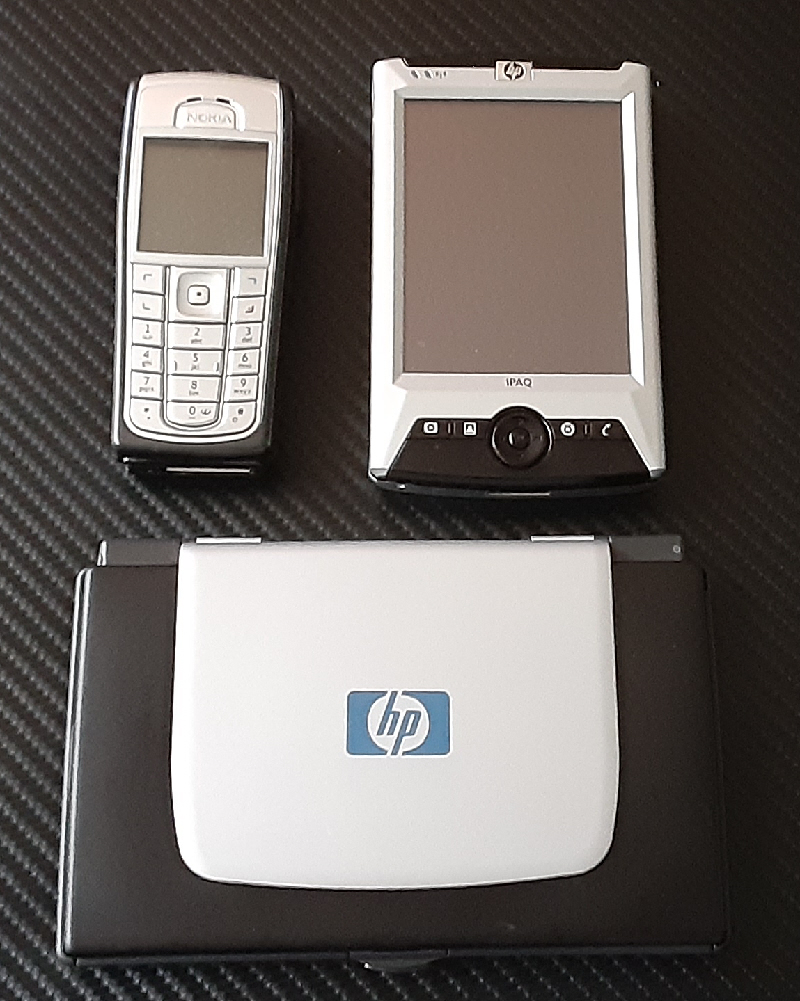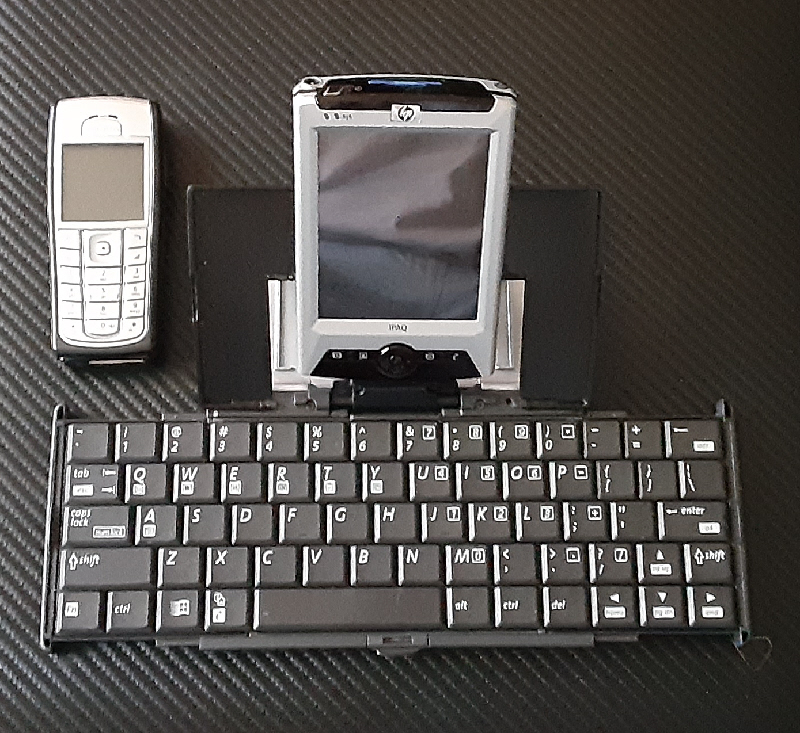
MMSTL - Text Webcasting
"Text Webcasting" was a term used in the MMSTL, originating in the month of October 2005. The idea behind it was to provide MMSTL website vistors with a means of attending the upcoming November DPBA Masters duckpin event, without having to be at the bowling center. Text Webcasting served a 'play-by-play' description of the men's stepladder finals to anyone viewing the Travel League website.
Smartphones were not an option at that time (Apple's iPhone didn't come along until 2007) and people still were mostly reliant on desktop PCs and laptop computers for surfing the web. Using a Nokia cell phone (6230i) for an Internet connection, along with an HP IPAQ pocket computer and its portable keyboard, ('bluetooth' was used to connect the phone to the IPAQ), I would type in a short description on a frame-by-frame basis, after each ball was thrown (for example, something like "1st frame, ball 1 for Mark Callahan: left the 1-2-4"). This short one-liner would then be sent as a "feed" back to a receiving page on the MMSTL website, where those viewing the page remotely could "take in" the action. This system worked pretty well, although it was a little tricky in getting the bluetooth to connect to the IPAQ. The length of a line of code was usually between 40 and 80 characters, as that was all that was really practical, given the amount of time between balls in a frame. I suppose a laptop could have been used to accomplish the same thing, but I wanted to simulate the procedure using something more pocket-sized. This setup was mostly a novelty idea to see if it would work, so it was kind of a neat thing.
 |
 |
| Nokia phone, HP IPAQ Pocket PC, and portable keyboard | |
It wasn't until a couple of years later that I was tuning in to the NFL, and I heard mention by the TV commentators of something like, "Terrell Owens tweeted . . .", and I eventually also heard the term "Twitter". I didn't really know much about that social media outlet -- I had barely picked up knowledge about Facebook, which began in 2004. After briefly looking at Twitter, I saw it was basically a two-way version of the Text Webcasting system from the 2005 DPBA Masters, except that people could respond to "feeds", or "tweets", just as they do in blogs. The difference between the MMSTL version and Twitter's variation was that Twitter used "SMS Messaging", which is a nifty "plug-in" utility that allowed 2-way conversations.
With this similarity existing between Twitter and the MMSTL "feed" system, it was sort of an amazing coincidence that Twitter's first 2 letters were the same as "Text Webcasting's" initials. And it also didn't take much 'brain-work' to figure out that a "tweet", as named by Twitter, is basically a distortion of the term "Text Webcasting Feed", or "tweed" for short. After later learning about legal trademarks, it sort of made sense why the name "Twitter" was given to the application instead of something like "Text Webcasting", since trademarks can't have names that are directly descriptive of what the product does. But a term like 'twitter', which is what a bird does, just like 'tweeting', is acceptable. I would venture to say that the company came up with the name 'Twitter' (and its 'sparrow' icon) after it coined the term 'tweet'.
After all this information seemed to fall into place toward understanding the social media platform, I got curious and looked up Twitter on Google. I was surprised to learn that the company was founded in March 2006 -- 4 to 5 months after Text Webcasting was announced and subsequently debuted on the MMSTL site. Strange, isn't it? Keep in mind that the MMSTL site was a reference point for bowling between the continents at the time. Maybe someone connected with Twitter in some way was a part of the "near 2 million", just like those who communicated with the MMSTL from Colorado, Indiana, Canada, and Argentina several years earlier. Who knows?
October 14, 2005 - MMSTL promo for Text Webcasting
October 21, 2005 - MMSTL promo for Text Webcasting
November 4, 2005 - MMSTL promo for Text Webcasting